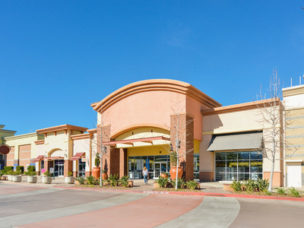Stay in the know
Subscribe to the Real Estate Blog and we’ll send you an email each time something new is posted.
Subscribe to the Real Estate Blog and we’ll send you an email each time something new is posted.
Blogs
Real Estate Blog
6 Tips for Retail Tenants: Traps Preventing Lease Transfers
Retail tenants entering into long term leases should be aware that tenants’ rights to assign or sublet may prove illusory if other lease provisions effectively prevent transferring the lease to a third party. Here are several lease provisions that should be analyzed to ensure that a prospective transferee has the flexibility to operate its business and be willing to assume the lease:
- Use. The use clause must be broad enough to allow transfers for a different retail use. If the use clause states that the premises may only be used for the original tenant’s particular use “and for no other use or purpose,” the original tenant be precluded from assigning or subletting to a different type of business. Most favorable for the tenant would be for the lease to provide that the premises may be used for the initial use and “ any other lawful use” or “any other lawful retail or commercial use” that does not conflict with any exclusive use then in effect granted to another tenant in the Shopping Center. A compromise would require landlord’s reasonable consent to a change in use.
- Trade Name. Tenants should be wary of agreeing to operate under a specific trade name. If tenant agrees to conduct business under a specific trade name, it should negotiate the right to change the trade name without landlord’s consent. Alternatively, the lease may provide that changes to the name may be approved by landlord, such approval not to be unreasonably withheld, conditioned, or delayed.
- Alterations. If the lease requires landlord’s consent in its sole discretion for all alterations, a transferee may not be able to redesign/refixture the store. Interior, non-structural alterations after the initial build-out should be allowed without the necessity of landlord’s consent. Material alterations (such as exterior alterations, or those that affect the structure, or materially affect building systems) will usually require the landlord’s consent, but such consent should not be unreasonably withheld, conditioned, or delayed.
- Signage. Transferees will need the right to change exterior signage. If the lease requires landlord’s consent in its sole and absolute discretion for changes in exterior signage, a new tenant may be prohibited from erecting its signage. The lease should provide that landlord’s consent to changes in exterior signage shall not be unreasonably withheld, conditioned, or delayed. Furthermore, tenants should seek to limit landlord’s approval rights to proposed changes to tenant’s exterior signs which are consistent with tenant’s current or future prototypical building signs, or those of a successor regional or national retailer’s prototypical building signs.
- Operating Covenant. If the lease requires continuous operation (i.e., no right to go dark), an exception should be carved out for reasonable time periods for transfers and the build outs required before a successor tenant opens for business.
- Certain Tenant Rights only applying to the Original Tenant. The lease may provide that certain rights granted under the lease are only applicable to the original tenant. Therefore, any transferee will not be entitled to such rights. For example, the lease may provide that the tenant’s right to offset rent in the event of self-help is limited to the original tenant. Try to limit these types of restrictions or carve out an exception for subtenants of a certain minimum net worth.



